Struggling with snoring, disrupted sleep, or waking up feeling exhausted? You’re not alone. Millions of people suffer from poor sleep quality due to restricted airflow while sleeping. The good news? Nasal strips offer a simple, non-invasive solution to open up your airways, allowing for better breathing, deeper sleep, and even improved overall health.
Why Do People Snore? The Science Behind Blocked Airways
Snoring happens when airflow is partially obstructed in the nasal passages, causing vibrations in the throat. This can be due to:
-
Nasal congestion from allergies or colds
-
Deviated septum or narrow nasal passages
-
Mouth breathing, which leads to a dry throat and less oxygen intake
How Nasal Strips Open Your Nasal Passages for Unrestricted Breathing
Nasal strips work by gently lifting the sides of your nose, increasing airflow and reducing resistance.
This means:
✔️ Less snoring
✔️ Improved nasal breathing
✔️ Higher oxygen intake for better sleep quality
The Benefits of Nasal Strips for Mouth Breathers
Many people unconsciously breathe through their mouths at night, leading to:
-
Dry mouth and bad breath
-
Interrupted sleep cycles
-
Increased risk of sleep apnea
By using nasal strips, you can train yourself to breathe through your nose, promoting better sleep and overall respiratory health.
Why Non-Toxic Nasal Strips Are a Safer Choice for Your Health
Not all nasal strips are created equal. Many popular brands contain PFAs (forever chemicals) linked to hormone disruption and other health risks. Clean Strips offer a 100% PFAs-free alternative, ensuring a safe and non-toxic sleep aid.
How to Use Nasal Strips Effectively for Maximum Results
-
Wash and dry your nose before applying.
-
Position the strip just above the nostrils.
-
Press down firmly and enjoy better breathing all night!
Try Clean Strips today and experience the difference of PFAs-free, non-toxic nasal strips designed for better sleep and healthier breathing!
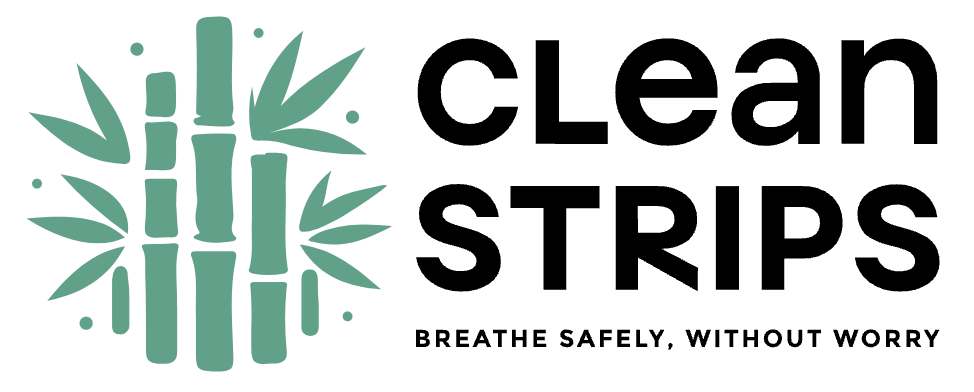

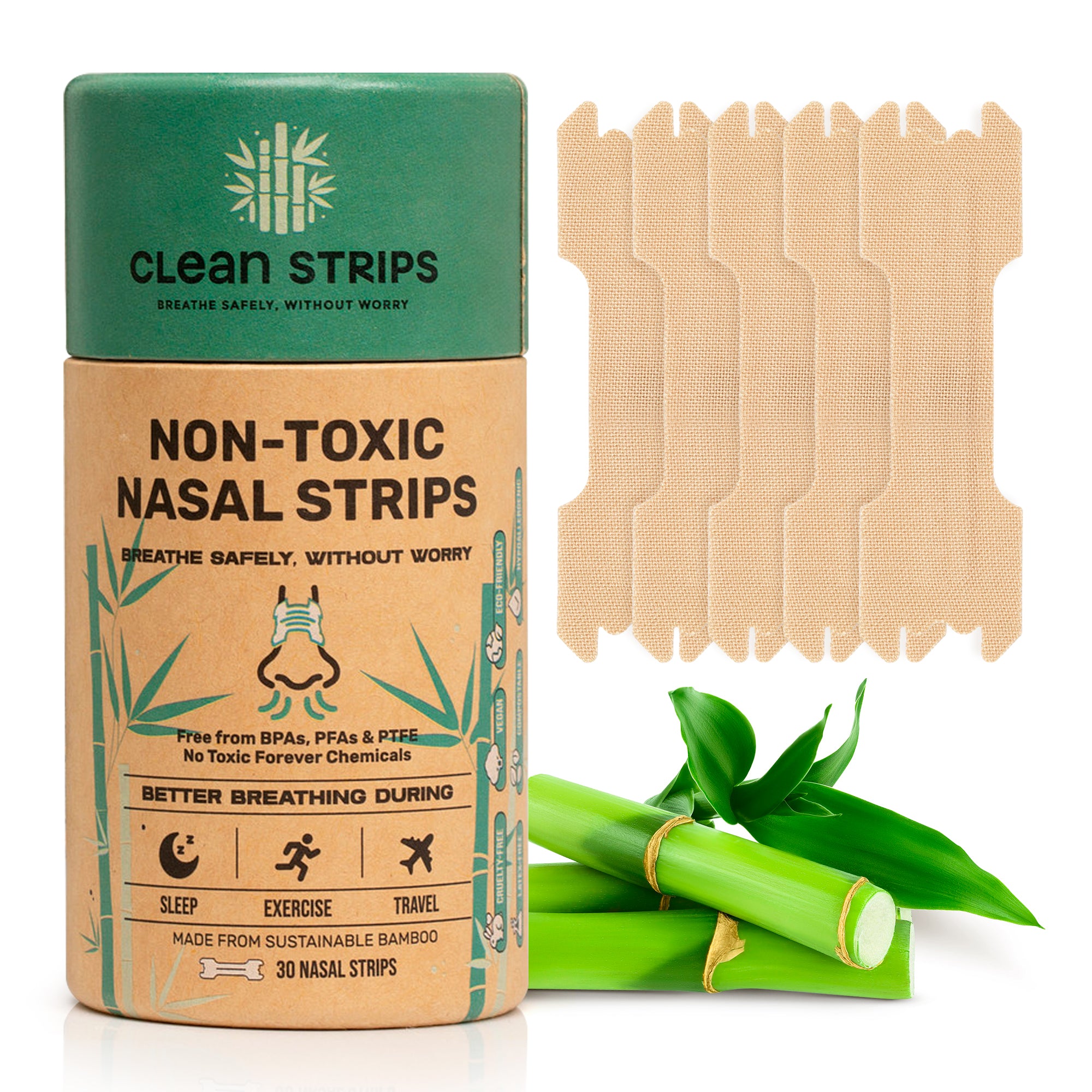
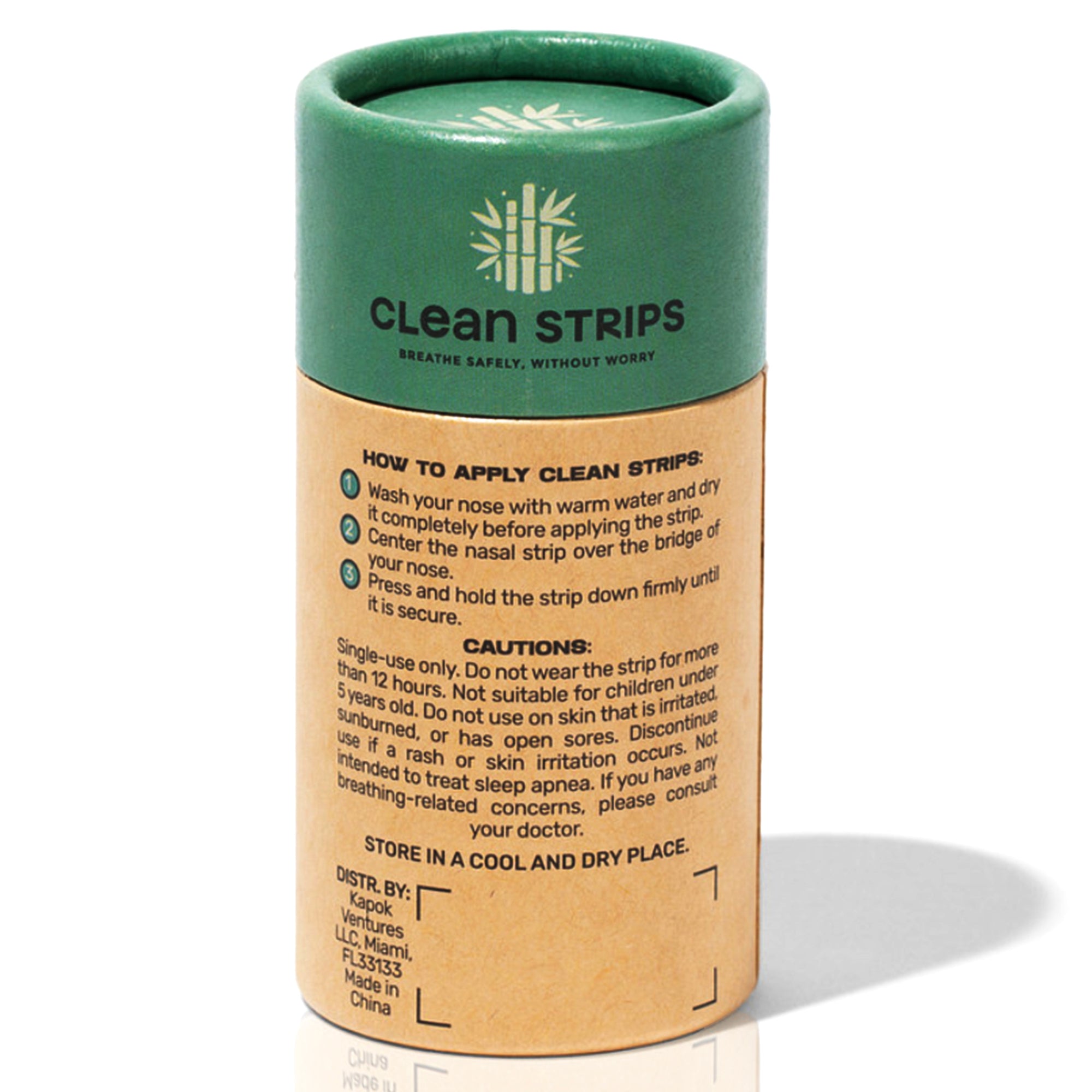
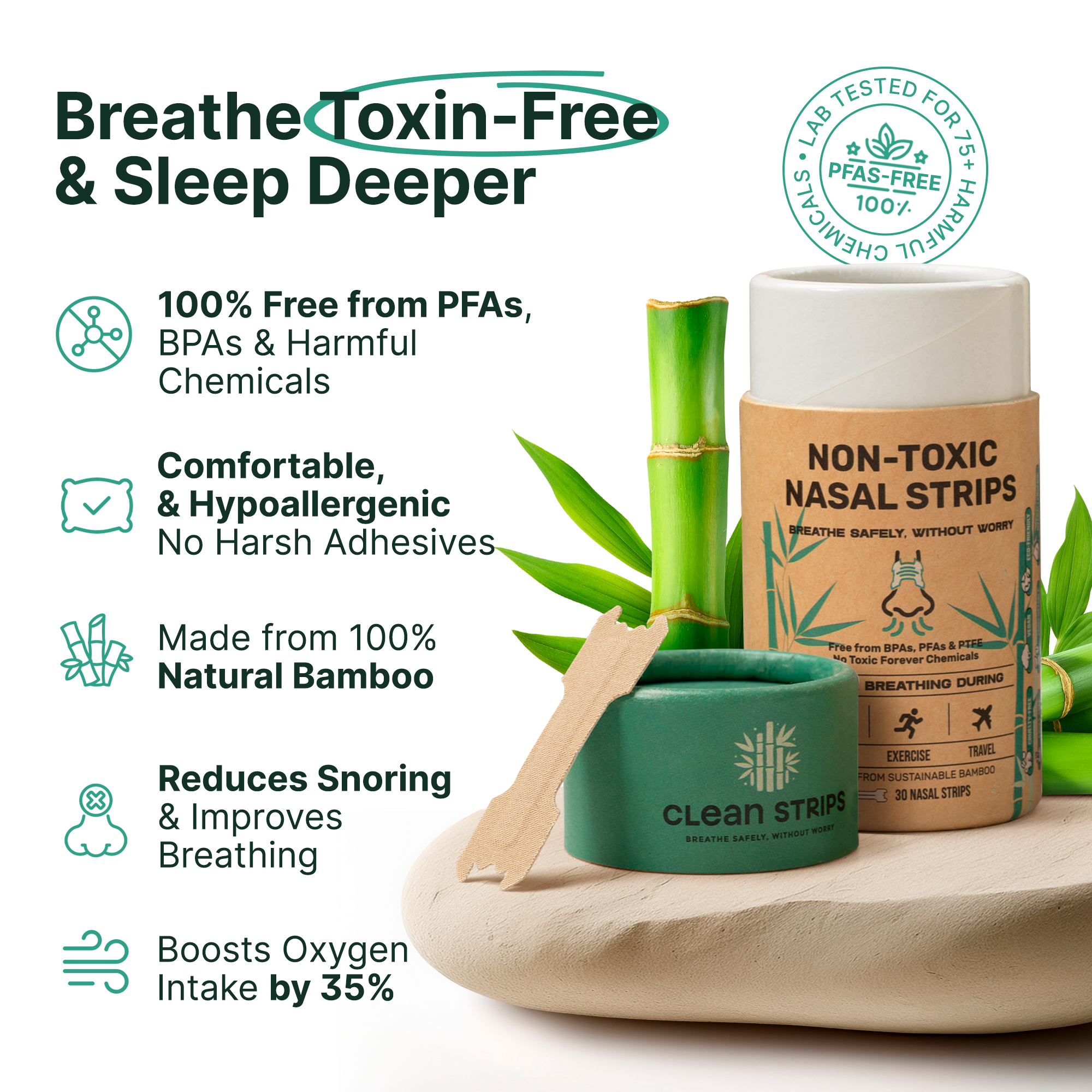
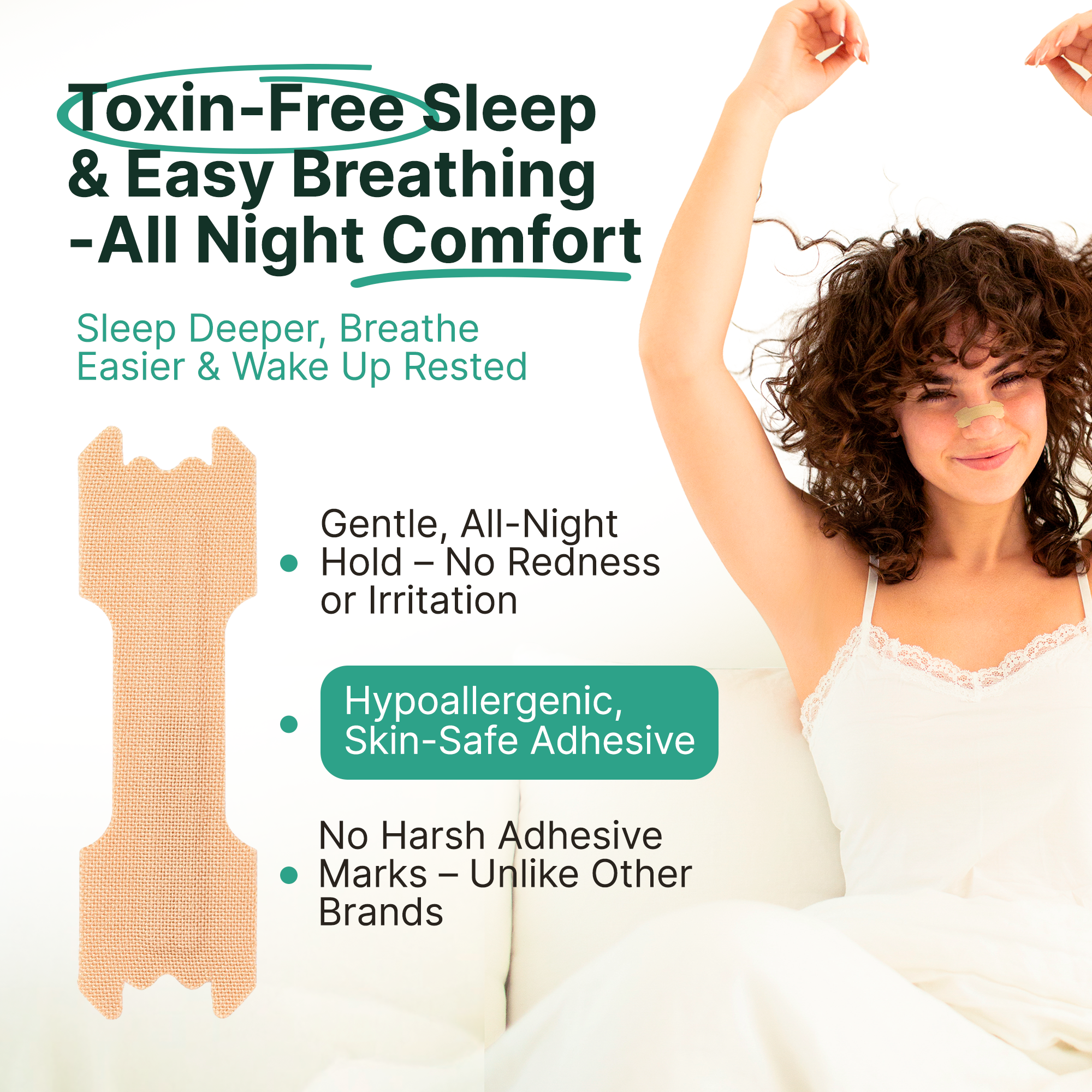


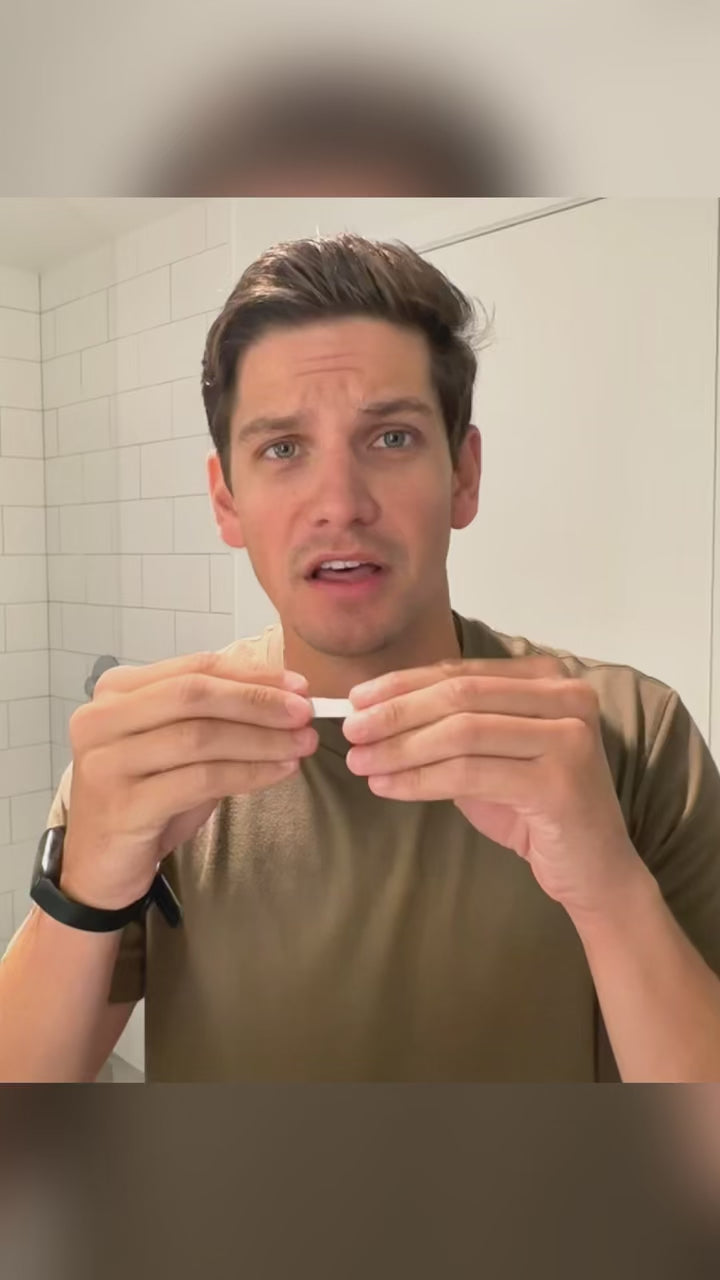
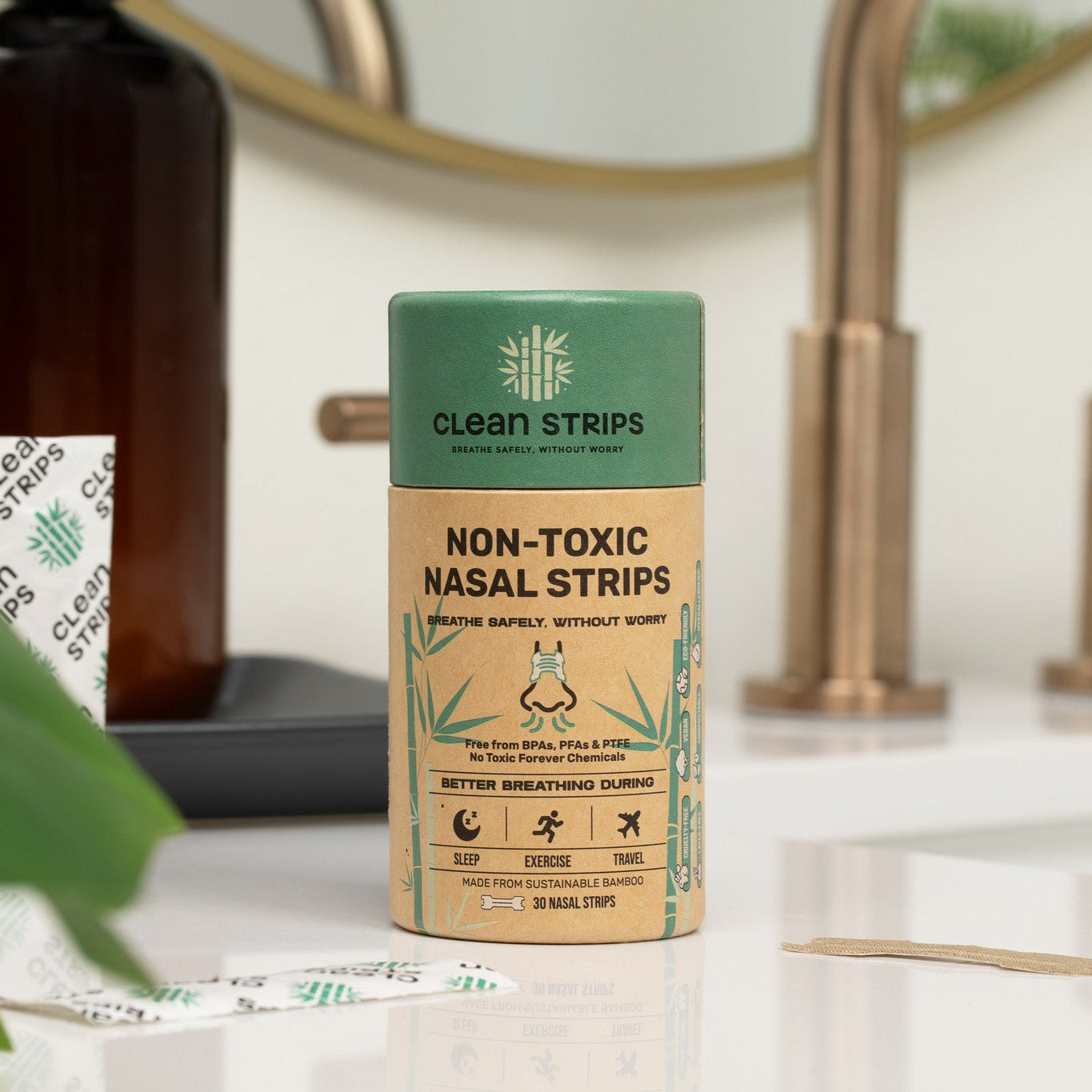
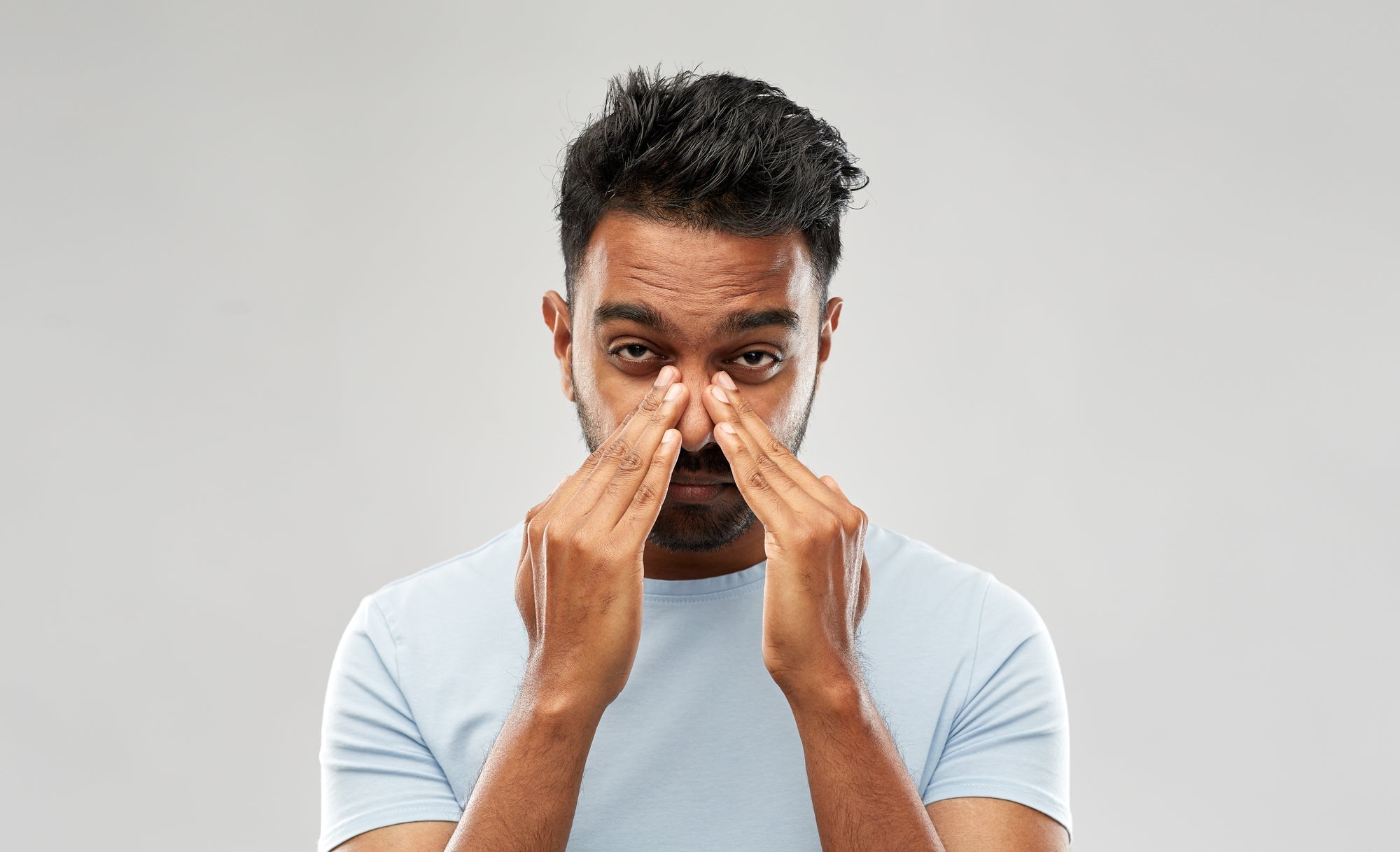


Share:
The Hidden Dangers of PFAs in Traditional Nasal Strips: What You Need to Know
Nose Breathing vs. Mouth Breathing: Why It Matters for Your Sleep, Health, and Energy